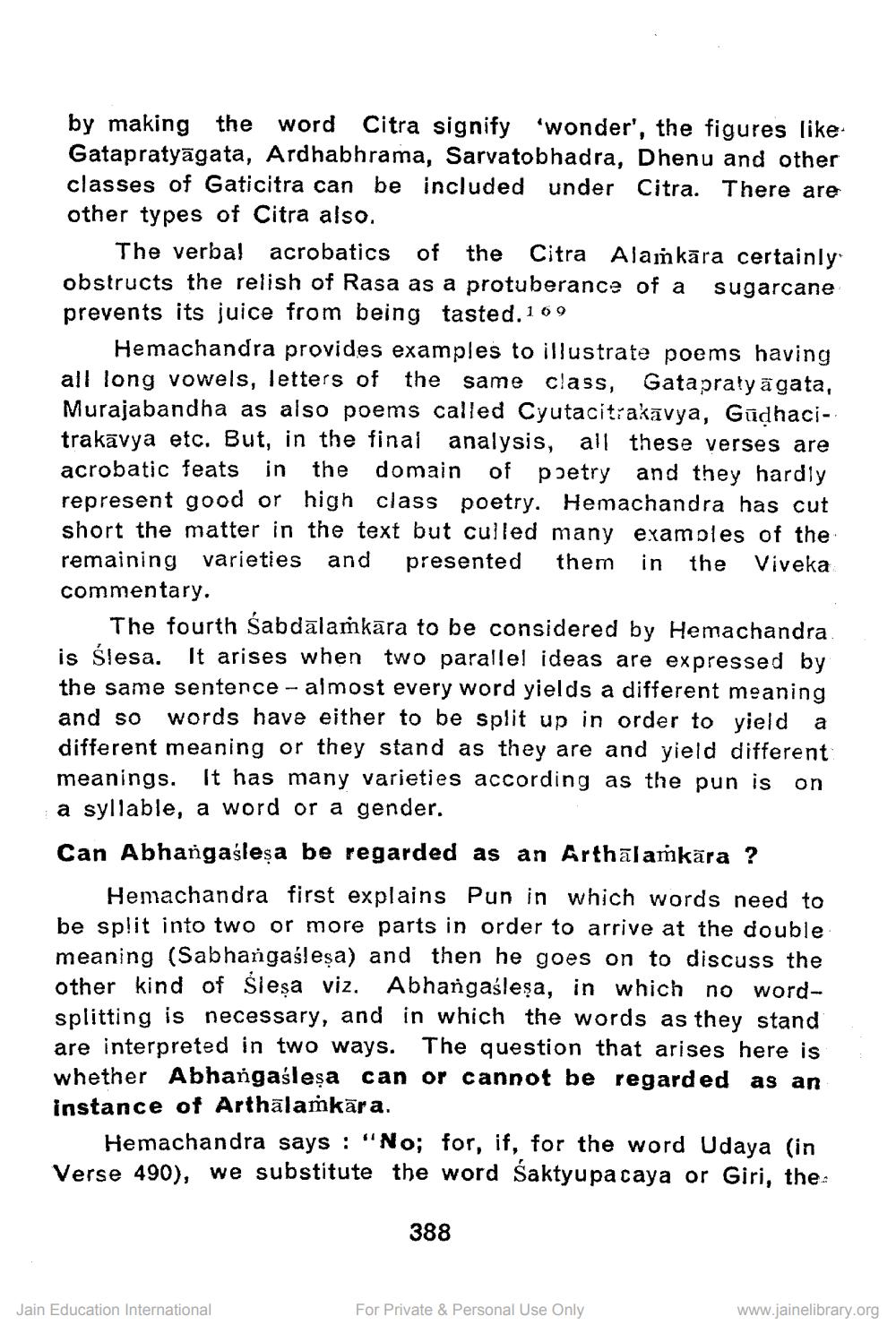________________
by making the word Citra signify 'wonder', the figures like Gatapratyāgata, Ardhabhrama, Sarvatobhadra, Dhenu and other classes of Gaticitra can be included under Citra. There are other types of Citra also.
The verbal acrobatics of the Citra Alamkara certainly obstructs the relish of Rasa as a protuberance of a sugarcane prevents its juice from being tasted. 169
Hemachandra provides examples to illustrate poems having all long vowels, letters of the same class, Gatapraty a gata, Murajabandha as also poems called Cyutacitrakavya, Guḍhaci-. trakāvya etc. But, in the final analysis, all these verses are acrobatic feats in the domain of poetry and they hardly represent good or high class poetry. Hemachandra has cut short the matter in the text but culled many examples of the remaining varieties and presented them in the Viveka commentary.
The fourth Sabdalaṁkāra to be considered by Hemachandra. is Ślesa. It arises when two parallel ideas are expressed by the same sentence - almost every word yields a different meaning and so words have either to be split up in order to yield a different meaning or they stand as they are and yield different meanings. It has many varieties according as the pun is on a syllable, a word or a gender.
Can Abhangaśleṣa be regarded as an Arthālaṁkāra ?
Hemachandra first explains Pun in which words need to be split into two or more parts in order to arrive at the double meaning (Sabhangaśleṣa) and then he goes on to discuss the other kind of Sieṣa viz. Abhangaślesa, in which no wordsplitting is necessary, and in which the words as they stand are interpreted in two ways. The question that arises here is whether Abhangaśleṣa can or cannot be regarded as an instance of Arthalaṁkāra.
Hemachandra says: "No; for, if, for the word Udaya (in Verse 490), we substitute the word Śaktyupa caya or Giri, the
Jain Education International
388
For Private & Personal Use Only
www.jainelibrary.org




